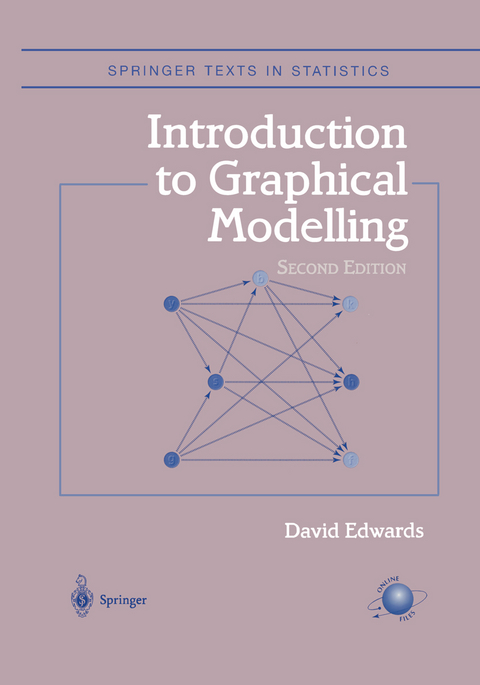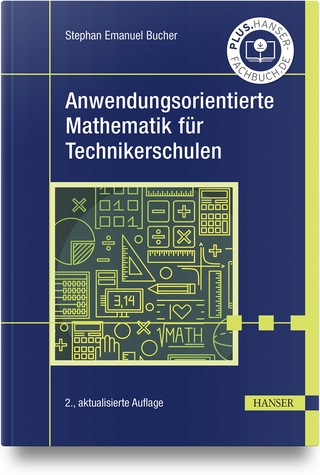
Introduction to Graphical Modelling
Springer-Verlag New York Inc.
978-1-4612-6787-4 (ISBN)
1 Preliminaries.- 1.1 Independence and Conditional Independence.- 1.2 Undirected Graphs.- 1.3 Data, Models, and Graphs.- 1.4 Simpson’s Paradox.- 1.5 Overview of the Book.- 2 Discrete Models.- 2.1 Three-Way Tables.- 2.2 Multi-Way Tables.- 3 Continuous Models.- 3.1 Graphical Gaussian Models.- 3.2 Regression Models.- 4 Mixed Models.- 4.1 Hierarchical Interaction Models.- 4.2 Breaking Models into Smaller Ones.- 4.3 Mean Linearity.- 4.4 Decomposable Models.- 4.5 CG-Regression Models.- 4.6 Incomplete Data.- 4.7 Discriminant Analysis.- 5 Hypothesis Testing.- 5.1 An Overview.- 5.2 X2-Tests.- 5.3 F-Tests.- 5.4 Exact Conditional Tests.- 5.5 Deviance-Based Tests.- 5.6 Permutation F-Test.- 5.7 Pearson x2-Test.- 5.8 Fisher’s Exact Test.- 5.9 Rank Tests.- 5.10 Wilcoxon Test.- 5.11 Kruskal-Wallis Test.- 5.12 Jonckheere-Terpstra Test.- 5.13 Tests for Variance Homogeneity.- 5.14 Tests for Equality of Means Given Homogeneity.- 5.15 Hotelling’s T2.- 6 Model Selection and Criticism.- 6.1 Stepwise Selection.- 6.2 The EH-Procedure.- 6.3 Selection Using Information Criteria.- 6.4 Comparison of the Methods.- 6.5 Box-Cox Transformations.- 6.6 Residual Analysis.- 6.7 Dichotomization.- 7 Directed Graphs and Their Models.- 7.1 Directed Acyclic Graphs.- 7.2 Chain Graphs.- 7.3 Local Independence Graphs.- 7.4 Covariance Graphs.- 7.5 Chain Graphs with Alternative Markov Properties.- 7.6 Reciprocal Graphs.- 8 Causal Inference.- 8.1 Philosophical Aspects.- 8.2 Rubin’s Causal Model.- 8.3 Pearl’s Causal Graphs.- 8.4 Discussion.- A The MINI Command Language.- A.1 Introduction.- A.2 Declaring Variables.- A.3 Undirected Models.- A.3.1 Deleting Edges.- A.3.2 Adding Edges.- A.3.3 Other Model-Changing Commands.- A.3.4 Model Properties.- A.4 Block-Recursive Models.- A.4.1 Defining the Block Structure.-A.4.2 Block Mode.- A.4.3 Defining Block-Recursive Models.- A.4.4 Working with Component Models.- A.5 Reading and Manipulating Data.- A.5.1 Reading Casewise Data.- A.5.2 Reading Counts, Means, and Covariances.- A.5.3 Transforming Data.- A.5.4 Restricting Observations.- A.5.5 Generating Raw Data.- A.5.6 Deleting Variables.- A.6 Estimation.- A.6.1 Undirected Models (Complete Data).- A.6.2 Undirected Models (Missing Data).- A.6.3 CG-Regression Models.- A.7 Hypothesis Testing.- A.7.1 x2-Tests.- A.7.2 Test of Homogeneity.- A.7.3 F-Tests.- A.7.4 Edge Deletion Tests.- A.7.5 Edge Deletion F-Tests.- A.7.6 Exact Tests.- A.7.7 Symmetry Tests.- A.7.8 Randomisation Tests.- A.8 Model Selection.- A.8.1 Stepwise Selection.- A.8.2 The EH-Procedure.- A.8.3 Selection Using Information Criteria.- A.9 The Box-Cox Transformation.- A.10 Residuals.- A.11 Discriminant Analysis.- A.12 Utilities.- A.12.1 File Input.- A.12.2 The Workspace.- A.12.3 Printing Information.- A.12.4 Displaying Parameter Estimates.- A.12.5 Displaying Summary Statistics.- A.12.6 Setting the Maximum Model.- A.12.7 Fixing Variables.- A.12.8 Macros.- B Implementation Specifics of MB’!.- B.1 Calling MIM.- B.2 The Main Menu.- B.3 Entering Commands and Navigating the Work Area.- B.4 The Built-In Editor.- B.5 Interactive Data Entry.- B.6 Independence Graphs.- B.7 Simple Data Graphics.- B.7.1 Scatter Plots.- B.7.2 Histograms.- B.7.3 Box Plots.- B.8 Graphics Export Formats.- B.9 Direct Database Access.- B.10 Program Intercommunication.- C On Multivariate Symmetry.- D On the Estimation Algorithms.- D.1 The MIPS Algorithm.- D.1.1 Notation.- D.1.2 The Likelihood Equations.- D.1.3 The General Algorithm.- D.1.4 The A-Collapsible Variant.- D.1.5 The Mean Linear Variant.- D.1.6 The Q-Equivalent Variant.- D.1.7 The Step-HalvingVariant.- D.2 The EM-Algorithm.- D.3 The ME-Algorithm.- References.
| Reihe/Serie | Springer Texts in Statistics |
|---|---|
| Zusatzinfo | XV, 335 p. |
| Verlagsort | New York, NY |
| Sprache | englisch |
| Maße | 178 x 254 mm |
| Themenwelt | Mathematik / Informatik ► Mathematik ► Angewandte Mathematik |
| Mathematik / Informatik ► Mathematik ► Wahrscheinlichkeit / Kombinatorik | |
| ISBN-10 | 1-4612-6787-0 / 1461267870 |
| ISBN-13 | 978-1-4612-6787-4 / 9781461267874 |
| Zustand | Neuware |
| Haben Sie eine Frage zum Produkt? |
aus dem Bereich


